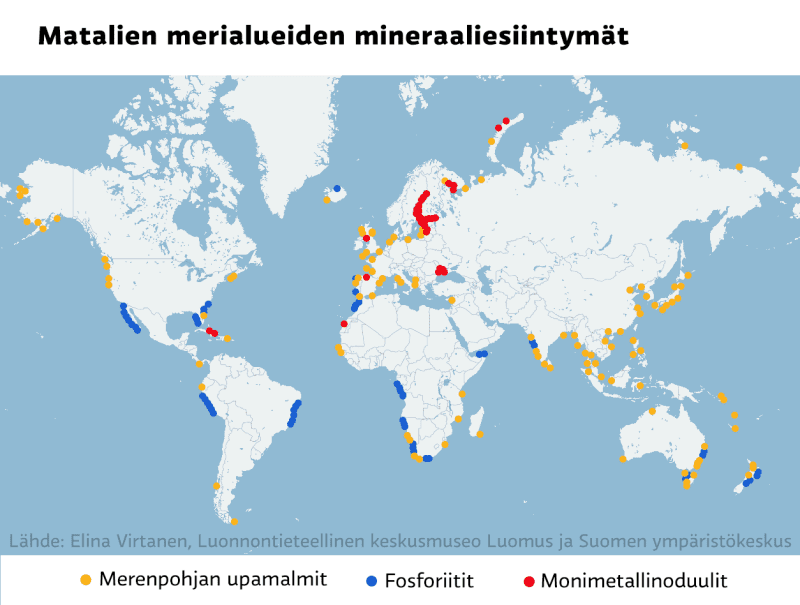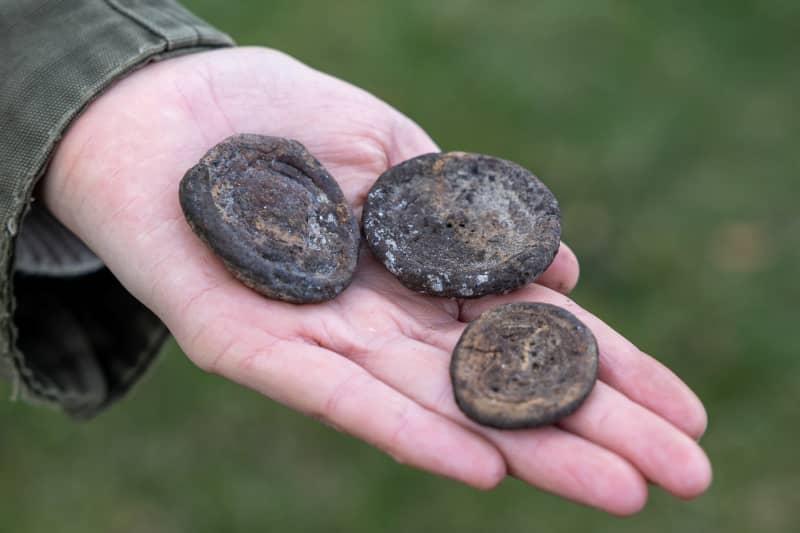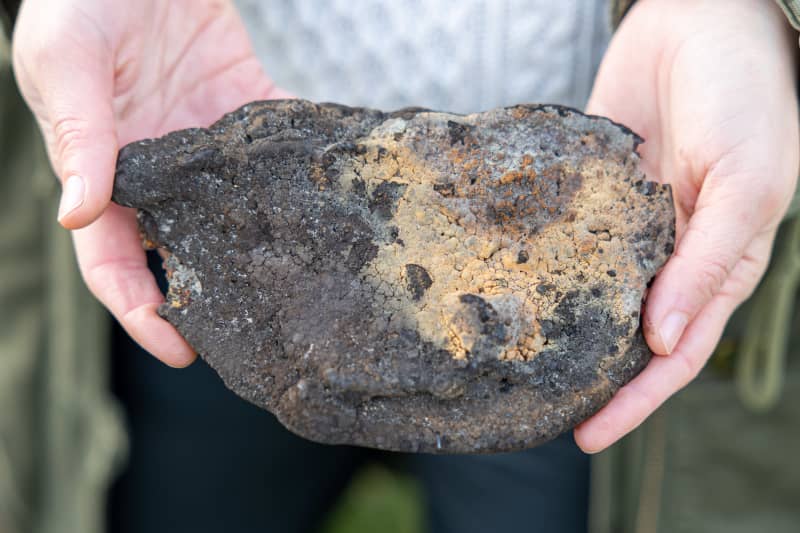Mining in shallow seas, scientists say, puts sustainability objectives at risk. In the Baltic Sea, ore mining is a new industry.
Exploitation of seabed ores may be closer than perhaps previously thought.
The Swedish company Scandinavian Ocean Minerals has applied for a permit to dredge ore from the bottom of the Bothnian Sea in the Swedish Exclusive Economic Zone.
The aim is to collect iron manganese sediments, which, according to Finnish research, are abundant along the coast of the Bothnian Sea. The sediments have a high metal content and are therefore of interest to the mining industry.
Sediments have been mapped in Finnish marine areas in connection with the VELMU inventory program for the diversity of underwater marine life.
More deposits have also been found in the Gulf of Finland, where the Russians studied them at the beginning of the millennium. However, this did not lead to commercial exploitation.
According to a Finnish study, the extent of seabeds covered by sediments in Finnish sea areas is greater than expected, as sediments were found in approximately 7,000 places during VELMU and follow-up studies, and minerals are estimated to cover at least 11% of the seabed.
The results were published in an article in 2019. Those results provided new information about the complexity of the seabed in coastal sea areas.
The importance of mineral deposits for the marine ecosystem is still poorly known, but the cobalt and other metals they contain are of increasing interest.
Conservation and mining in conflict
According to a study by the University of Helsinki, mining in shallow sea areas conflicts with international conservation and sustainability goals. It also brings great environmental risks.
Marine mining has been proposed as a sustainable alternative whose environmental impact and mining costs would be lower than traditional mining.
However, suction dredging of sediments on the seabed always changes the shapes of the bottom and destroys the bottom biota.
from the Protection Commission.

There are still many untouched and well-maintained sea areas in the Gulf of Pohjanlahti.
The ambitious goal of the EU and the UN is to protect 30 percent of marine areas, and entries have been made in EU directives to achieve a good state of the sea.
– If it is considered that the minerals at the bottom of shallow sea areas must be used as a more sustainable alternative to surface mines and to secure the availability of minerals, then more researched information on the impact of activities on the sea is definitely needed.
According to current information, the risks are too great, according to Kaikkone.
Electrification increases demand for battery metals
In particular, the growing demand for battery metals such as nickel and cobalt has increased interest in seabed minerals.
– Those sediments can be found on the seabed, and for decades people have been thinking about whether it wouldn’t be easy to absorb them from there instead of having to set up an above-ground mine.
Tin and diamonds have been mined in the world’s seas from the territorial waters of other countries in the past. Mining of ore metals is a new industry in the Baltic Sea.
On the coast of Namibia, a Belgian company has been digging for diamonds from the seabed for years. Action in the world has not always pleased everyone.
– There are a lot of socio-economic conflicts associated with activities located especially on the coast when infrastructure is built. Many of the projects are also problematic because it is often a foreign company that operates in the territorial waters of another country, says Laura Kaikkonen.

Mining is cheaper in shallow waters
The potential of exploiting deep-sea minerals has long been recognized, but commercialization has been limited by concerns about the impact of mining on sensitive deep-sea ecosystems.
– Deep sea species are still poorly known, and species unknown to science are constantly encountered, Virtanen points out in the university’s press release.
Mining in deep sea areas is also considerably expensive. For these reasons, the mining of minerals in shallow sea areas has been proposed as a more sustainable solution to the increasing need for minerals.

Since the minerals of the shallow seas have not been widely exploited, there is a lack of national legislation for its regulation. This in part attracts the mining industry to, for example, the Baltic Sea.
However, the environmental effects of the mining industry in these sea areas are not yet known.
– The environmental effects are likely to be similar to operations that remove the seabed. Ecosystems can take decades to recover, says Laura Kaikkonen.
The ecosystems of shallow sea areas are already in a weakened state, as human activity is concentrated in coastal areas. Mineral extraction changes habitats, causes local species loss and changes in species communities.
According to the researchers, if mining continues in shallow sea areas before the appropriate legislation is in place, suspending the operation can be challenging.

